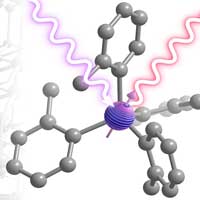 An interdisciplinary team of chemists and physicists has developed a new method to create tailor-made qubits: by chemically synthesizing molecules that encode quantum information into their magnetic, or 'spin', states.
An interdisciplinary team of chemists and physicists has developed a new method to create tailor-made qubits: by chemically synthesizing molecules that encode quantum information into their magnetic, or 'spin', states.
Tuesday, December 8, 2020
In new step toward quantum tech, scientists synthesize 'bright' quantum bits
 An interdisciplinary team of chemists and physicists has developed a new method to create tailor-made qubits: by chemically synthesizing molecules that encode quantum information into their magnetic, or 'spin', states.
An interdisciplinary team of chemists and physicists has developed a new method to create tailor-made qubits: by chemically synthesizing molecules that encode quantum information into their magnetic, or 'spin', states.
Batteries mimic mammal bones for stability
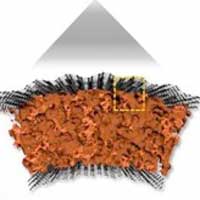 By copying the multilayer geometry of mammal bones, cathodes for sodium-ion batteries can be made more structurally stable, while maintaining high capacities and fast charge rates.
By copying the multilayer geometry of mammal bones, cathodes for sodium-ion batteries can be made more structurally stable, while maintaining high capacities and fast charge rates.
Nanospindles enhance use of ultrasound to fight cancer
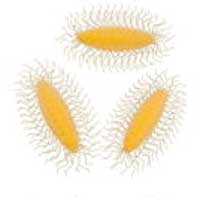 Nanoscale vanadium-doped titanium dioxide spindles sensitize cancerous tumors to ultrasound waves, markedly suppressing tumor growth.
Nanoscale vanadium-doped titanium dioxide spindles sensitize cancerous tumors to ultrasound waves, markedly suppressing tumor growth.
New method to label and track nanoparticles could improve our understanding of plastic pollution
 A ground-breaking method to label and track manufactured nano-plastics could signal a paradigm shift in how we understand and care for environments.
A ground-breaking method to label and track manufactured nano-plastics could signal a paradigm shift in how we understand and care for environments.
Adding silver to nanoclusters can do wonders for their luminescence
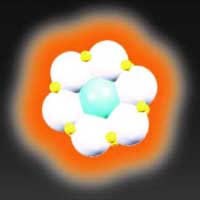 Researchers have discovered that a silver-doped platinum thiolate nanometal complex shows 18-fold greater photoluminescence than the original platinum complex.
Researchers have discovered that a silver-doped platinum thiolate nanometal complex shows 18-fold greater photoluminescence than the original platinum complex.
Novel holey nanosheets for detecting hydrogen gas leaks
 Scientists develop hydrogen sensors with holey zinc oxide nanosheets, which has high sensitivity and fast response time, to prevent accidents from hydrogen gas leaks.
Scientists develop hydrogen sensors with holey zinc oxide nanosheets, which has high sensitivity and fast response time, to prevent accidents from hydrogen gas leaks.
A molecule like a nanobattery
 How do molecular catalysts function, and what effects do they have? A team of chemists has come closer to the answers using a model molecule that functions like a molecular nanobattery.
How do molecular catalysts function, and what effects do they have? A team of chemists has come closer to the answers using a model molecule that functions like a molecular nanobattery.
Magnetic bacteria as micropumps
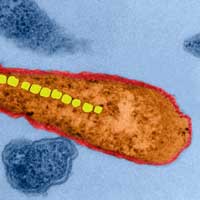 Scientists use magnetic bacteria to control liquids at the micro level. They are already thinking about using them in the human bloodstream for precision delivery of cancer drugs to a tumour.
Scientists use magnetic bacteria to control liquids at the micro level. They are already thinking about using them in the human bloodstream for precision delivery of cancer drugs to a tumour.
Observing the ultrafast motion of atoms and electrons
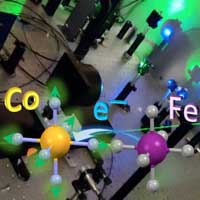 New research shows that it is possible to distinguish between the electronic dynamics of atomic motion on the scale of one tenth of one millionth millionth of a second (or 100 femtoseconds). This opens the way for the development of a science that can control materials through light.
New research shows that it is possible to distinguish between the electronic dynamics of atomic motion on the scale of one tenth of one millionth millionth of a second (or 100 femtoseconds). This opens the way for the development of a science that can control materials through light.
Subscribe to:
Comments (Atom)
